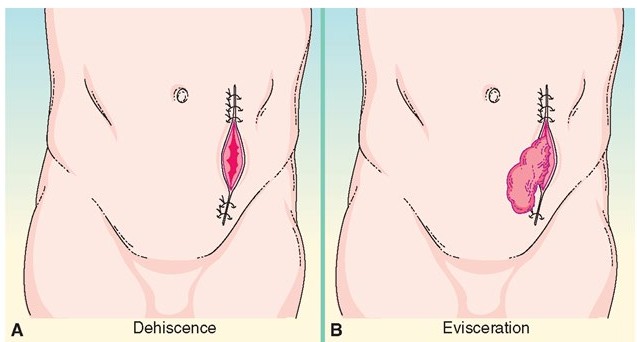A nurse is caring for a patient who has a surgical wound. Which of the following factors places the patient at risk for dehiscence? Select all that apply.
Poor nutritional status
Medication administration
Obesity
Nonadherence
Increased metabolic rate
The Correct Answer is A
Choice A reason: Poor nutritional status can impair wound healing and increase the risk of wound dehiscence.
Choice B reason: Medication administration is too vague to determine a risk for dehiscence without specifying the type of medication.
Choice C reason: Obesity can increase the risk of dehiscence due to the strain on the wound from excess tissue.
Choice D reason: Nonadherence could contribute to dehiscence if it refers to not following postoperative care instructions, but it is not specific enough in this context.
Choice E reason: An increased metabolic rate can lead to higher demands on the body's healing process, potentially affecting wound integrity.

Nursing Test Bank
Naxlex Comprehensive Predictor Exams
Related Questions
Correct Answer is B
Explanation
Choice A reason: Hyperactive bowel sounds are not typically associated with hyperkalemia, which is a high level of potassium in the blood.
Choice B reason: Decreased deep tendon reflexes can be a sign of hyperkalemia, as high potassium levels can affect neuromuscular function.
Choice C reason: Cerebral edema is not a direct manifestation of hyperkalemia; it is more commonly associated with other conditions such as traumatic brain injury or stroke.
Choice D reason: Weakening, or muscle weakness, can be a symptom of hyperkalemia, but it is less specific than decreased deep tendon reflexes.
Correct Answer is A
Explanation
Choice A reason: Diarrhea can lead to metabolic acidosis due to the loss of bicarbonate, which is a base, leading to a relative increase in acidity.
Choice B reason: Salicylate intoxication can initially cause respiratory alkalosis due to hyperventilation, but may later lead to metabolic acidosis as the body compensates.
Choice C reason: Vomiting typically leads to a loss of gastric acid, which would cause metabolic alkalosis, not acidosis.
Choice D reason: Hyperventilation is more commonly associated with respiratory alkalosis due to the excessive loss of CO2, which is an acid, not metabolic acidosis.
Whether you are a student looking to ace your exams or a practicing nurse seeking to enhance your expertise , our nursing education contents will empower you with the confidence and competence to make a difference in the lives of patients and become a respected leader in the healthcare field.
Visit Naxlex, invest in your future and unlock endless possibilities with our unparalleled nursing education contents today
Report Wrong Answer on the Current Question
Do you disagree with the answer? If yes, what is your expected answer? Explain.
Kindly be descriptive with the issue you are facing.
